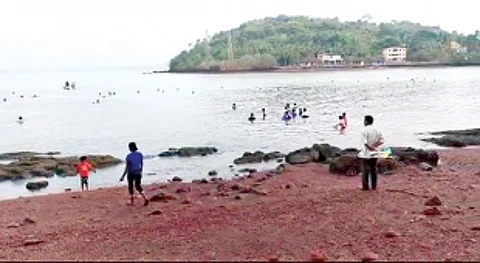

MARGAO: The huge clamour for windowpane oysters and other shellfish at Chicalim Bay has left local environmentalists worried about the consequences such indiscriminate exploitation of natural resources can have in the future.
As Dr Baban Ingole, Scientist with the National Centre for Polar and Ocean Research (NCPOR), opined, it’s not just the windowpane oysters, but the entire habitat of bivalve species that are being destroyed.
“Chicalim Bay is one of the sites on the west coast of India where you get windowpane oysters. Earlier, maybe 15-20 years ago, you would find them in abundance but the numbers had drastically reduced. Now finally, they are back but it is a total failure of the system as the local authorities have failed to put in measures to stop what is happening,” Ingole added.
He further praised the Chicalim Biodiversity Management Committee (BMC) for ensuring that the site is supervised and monitored.
When asked to elaborate on why windowpane oysters can be seen again in such bountiful amounts, Ingole pointed out that due to the Covid pandemic and restrictions on movement of barges and yards carrying out ship repairs nearby, the breeding site at Chicalim Bay for such shellfish including windowpane oysters were left unharmed, undisturbed and the results can be seen today.
“This is a God given gift to us and if we are not careful, we will have a future where there will be no more windowpane oysters left here. People are coming in canoes and taking them in sacks. This has to be stopped as commercial exploitation is not allowed,” said Rui M Da Costa Araujo, Chairman of Chicalim BMC.
Araujo said, “Besides, you have people coming in hordes and they are not even waiting for the low tide. But there seems to be no fear.”
“They are even going neck-deep into the water while standing to harvest the windowpane oysters. What we as the Chicalim BMC are demanding is the notification and guidelines issued by the Goa State Biodiversity Board (GSBB) for judicial cultivation followed,” Araujo added.
These rules were for only locals within a 5 km radius to be allowed as fishing of windowpane oysters, known as ‘mendios’ in Konkani, are means of livelihood for local fishermen. These include only traditional methods such as handpicking and in limited quantities.
“Unfortunately, they are taking everything from the bay. Meaning, even the small sized windowpane oysters or clams are being removed. This should not happen as this will prevent the baby shellfish/clams from growing to their adult size and it kills the breeding process too,” Araujo added.
He stated that the Chicalim BMC has identified and proposed a site for conservation of breeding ground of Windowpane Oysters in the Chicalim Bay as a Biodiversity Heritage Site, under section 37 of the Biological Diversity Act-2002
“There has to be balance in place. It is like agriculture; you need seeds for the crops to grow but if you remove all the seeds too there will be nothing left. We will soon go back to what it was where there was hardly anything left and after a point it will just stop growing here,” Ingole added.
Locals added that it is important that Chicalim maintains its status as other places on the West Coast, even Goa where windowpane oysters used to be found are destroyed.
They further referred to reports by scientists that confirm that Chicalim Bay is one of the habitats left in Asia for windowpane oysters, an endangered species.
Protected under Schedule IV of the Indian Wildlife Protection Act, 1972 windowpane oysters, scientifically known as Placuna Placenta, is in demand for its meat and more so for its shell although in the past it was sought after for its medicinal value too.
“The windowpane oysters require physico-chemical character of the water and sediment to grow optimally and any altered hydrochemistry and hydrodynamics will prove detrimental for their long-term survival and conservation. This concern assumes significance as it is a scheduled species as notified by the Union Ministry of Environment,” said Dr Manoj Borkar, Associate Professor of Zoology at Carmel College.
Dr Borkar had gone with Araujo and some of the locals on a mechanised canoe to survey the area along the coastal fringe of Chicalim village for scientific analysis a few years ago.
“We are lucky that we have this natural resource for free but we have to make sure it is protected. We have been trying to educate the public who come here and also want to send a message to others to avoid such overexploitation,” said Cyril Fernandes, convenor of the Chicalim Bio-Crusaders.
While the locals have had to deal with aggressive attacks from the people who they have tried to stop from overfishing, the BMC members are soon going to get identity cards from GSBB, which had awarded their unit the Goa State Biodiversity Conservation Awards 2022.
“When we speak to people, some question us as to who are we to stop them. We have had situations where we could have been badly injured,” Araujo added.
Responding to a query he added that they had approached the local authorities for assistance and even informed Environment Minister Nilesh Cabral about the situation.
They have also installed four boards along NH-66 from Chicalim up to Sancoale for the purpose of stakeholders’ education and awareness about the ecologically fragile marine Chicalim Bay for conservation of windowpane oysters.
However, such attempts to warn and sensitise the public have fallen on deaf ears so far.